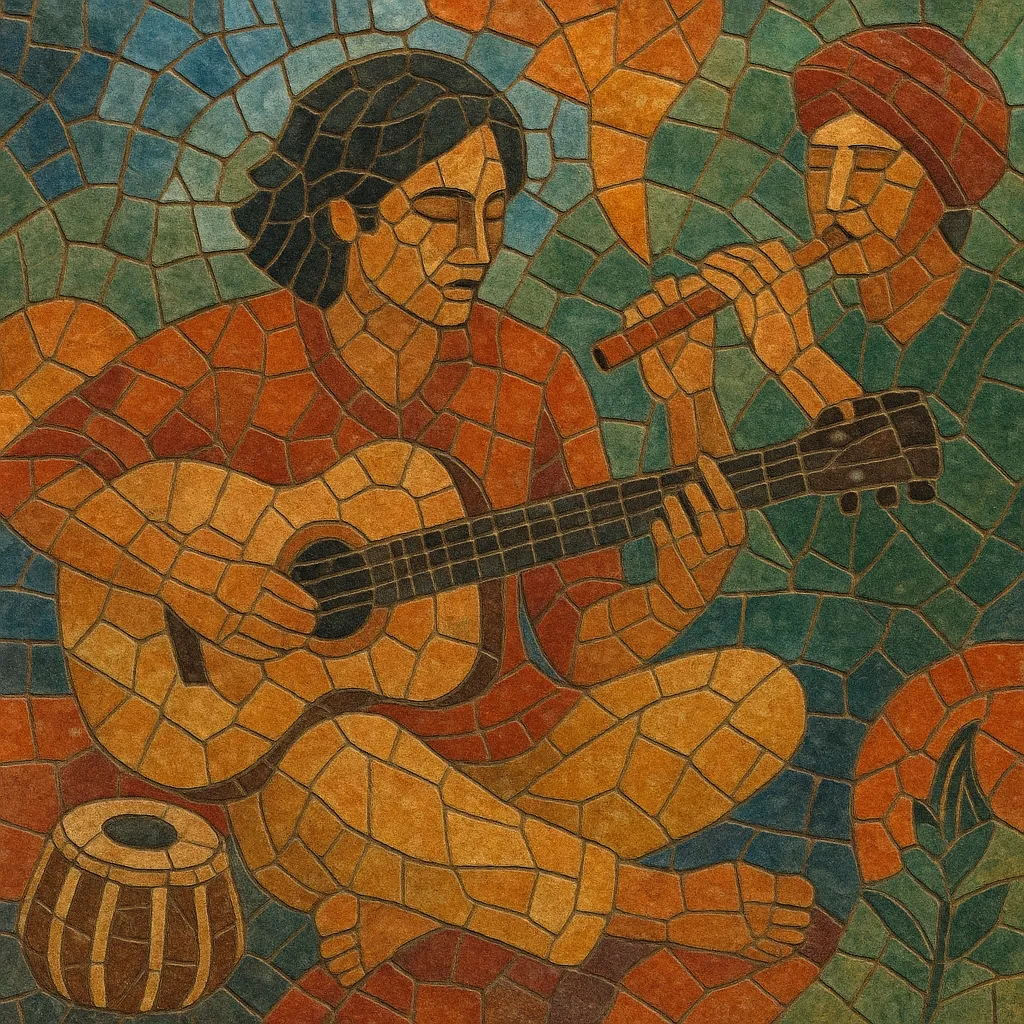Indian indie is the umbrella for independent, non-film music made in India across languages such as Hindi, English, and numerous regional tongues. It is defined more by its DIY production and artist-led release model than by a single sound.
Musically, it spans indie pop and rock, folk-fusion, singer‑songwriter ballads, dream‑pop/shoegaze textures, and electronic‑leaning productions. Artists often blend Western harmony and song forms with raga‑tinged melodies, Indian rhythmic feels, and occasional use of traditional instruments like tabla, bansuri, or sitar.
The scene grew rapidly with college festivals, small venues, and digital platforms (YouTube, streaming services, Bandcamp), plus boutique labels and festivals such as NH7 Weekender that created national visibility. Lyrically, it tends to be intimate and contemporary—touching on romance, urban life, identity, and nostalgia—while maintaining accessible hooks and warm, organic sonics.
Independent music in India began coalescing in the 1990s alongside Indipop and college rock circuits, fostered by music television, campus festivals, and metropolitan pub venues. Bands and singer‑songwriters operated largely outside the film industry, experimenting with English and Indian‑language originals while absorbing alternative and Britpop, folk, and electronica.
The term “Indian indie” gained traction in the 2010s as social media, YouTube, and streaming lowered barriers to distribution. Festivals such as NH7 Weekender (launched 2010) and a growing ecosystem of promoters, boutique labels, and venues connected previously local scenes (Delhi, Mumbai, Bengaluru, Pune, Kolkata). A wave of acts—spanning singer‑songwriter pop, folk‑fusion, dream‑pop, and electronic—built sizable followings without film tie‑ins.
By the late 2010s, Indian indie had diversified stylistically and linguistically, with artists releasing in Hindi, English, and regional languages. Playlists and algorithmic discovery accelerated crossover, while some indie artists moved fluidly between the indie world and commercial projects without abandoning independent release strategies. The scene today is defined by eclecticism, high production values, and a strong live and festival culture.
Start with a singer‑songwriter or band setup: vocals, acoustic or clean electric guitars, electric bass, and a restrained drum kit. Add keys/synths for pads, arpeggios, and subtle ear‑candy. To evoke Indian colors, tastefully incorporate tabla or dholak for grooves, and optional bansuri, sitar, sarangi, or tanpura drones as textural layers.
Use diatonic pop/rock progressions (I–V–vi–IV, I–vi–IV–V) enriched with add9/sus2/maj7 colors. For an Indian touch, write melodies that hint at common ragas (e.g., Yaman, Kafi, Bilawal) via characteristic intervals and meend (slides) or gamaka‑like ornamentation, while keeping the harmony accessible. Vocal lines should be intimate and lyrical, prioritizing singable hooks and conversational phrasing.
Keep tempos in the 70–120 BPM range. Most songs sit in 4/4 with lightly syncopated strumming or picked guitar patterns. If using Indian percussion, weave in the feel of kaherwa (8‑beat) or dadra (6‑beat) cycles beneath a standard pop backbeat. For dream‑pop/shoegaze shades, let drums be airy with roomy reverbs and gentle cymbal work.
Write personal, contemporary lyrics in Hindi, English, or regional languages. Themes often include love, urban restlessness, friendships, memory, and self‑reflection. Keep imagery relatable yet poetic; refrain from overly filmy tropes in favor of authentic, everyday storytelling.
Structure songs in familiar verse–pre–chorus–chorus arcs, with dynamic builds and a minimalistic bridge or drop to highlight vocals. Use warm saturation, tape‑style delays, spring/plate reverbs, and layered harmonies. Double‑track acoustics, add soft synth pads, and use tasteful field textures for atmosphere. Mix vocals forward and intimate; keep low‑end tight but not aggressive. Master for streaming with moderate loudness to preserve dynamics.


